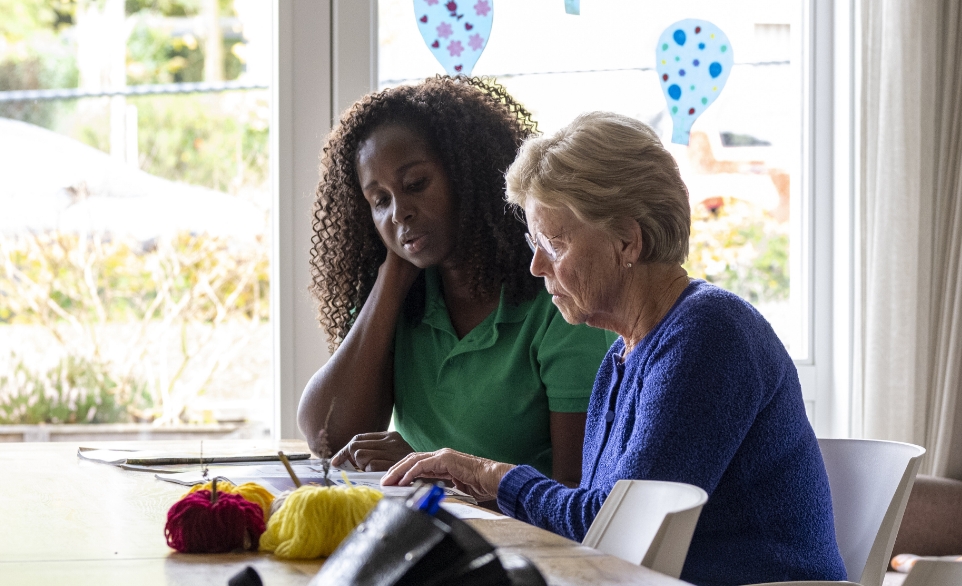
In today’s public sector procurement landscape, accessibility is no longer a nice-to-have — it’s an expectation. Commissioners aren’t just asking if you provide inclusive services — they want proof that your organisation champions accessibility in everything you do.
At Big Sister, we’ve supported hundreds of healthcare businesses in embedding accessibility into their bids in ways that are both genuine and competitive. Whether you’re tendering for homecare, supported living, or specialist mental health services, accessibility must run through your response — not just appear in a sentence or two about “equality.”
This blog will explain:
- What accessibility means in a bid context
- Why it matters in healthcare procurement
- How to demonstrate your commitment clearly and convincingly
What Do We Mean by Accessibility?
When buyers refer to accessibility, they’re thinking beyond disability ramps and hearing loops (though those matter too). In bids, accessibility often refers to:
- Service accessibility: Is your care available, inclusive, and tailored to all who need it?
- Communication accessibility: Can people engage with your service regardless of language, cognitive ability, or communication method?
- Cultural accessibility: Do your staff understand and adapt to diverse cultural and religious needs?
- Digital accessibility: Are your platforms and materials accessible to people with visual, motor, or cognitive impairments?
In short: accessibility is about removing barriers — whether they’re physical, emotional, digital, or cultural.
Why Accessibility Is Critical in Healthcare Bids
Healthcare providers serve the most diverse and vulnerable populations. Commissioners want reassurance that your service:
- Meets the requirements of the Equality Act 2010
- Promotes health equity
- Reaches marginalised groups who might otherwise fall through the cracks
- Is person-centred and tailored
Accessibility features heavily in quality questions and is often linked to Social Value, Service Design, and Patient Engagement sections of a bid.
Neglecting it can result in:
- Lost marks
- Weak scoring on inclusivity
- Mistrust from commissioners
- Missed opportunity to show your values
The Evaluator’s Mindset
At Big Sister, we’ve reviewed hundreds of feedback letters. When accessibility wasn’t addressed well, evaluators said things like:
“The bidder did not sufficiently demonstrate how they would adapt materials for those with sensory impairments.”
“Limited evidence of culturally competent care.”
“Lacked clarity on how people with communication barriers would access the service.”
This isn’t just box-ticking. Buyers want to know:
- How your service will include everyone
- What adaptations are in place
- Who is responsible for ensuring accessibility
- What results you’ve seen previously
How to Show Accessibility in Your Bid
Here are some ways you can prove you walk the talk:
-
Adaptable Communication Methods
Make clear that you:
- Offer Easy Read versions of documents
- Use large print and Braille where required
- Have access to BSL interpreters
- Translate materials into community languages
- Use pictorial aids or Makaton for those with learning disabilities
In your bid:
“All service materials, including care plans and user handbooks, are available in Easy Read, large print, and multiple languages. Our staff are trained in Makaton, and we maintain a directory of qualified BSL interpreters.”
-
Staff Training and Awareness
Show that accessibility isn’t an afterthought — it’s part of your culture. Mention:
- Equality, diversity, and inclusion training
- Dementia awareness
- LGBTQ+ competency
- Unconscious bias training
- Trauma-informed care
In your bid:
“All new staff complete mandatory training on accessibility and inclusive communication. We refresh this annually and run live scenario workshops led by people with lived experience.”
-
Physical Accessibility
Even in domiciliary care, this matters. Demonstrate:
- That your office premises are wheelchair accessible
- That your carers can spot and report access barriers in the home
- That you work with occupational therapists to adapt spaces
In your bid:
“Our staff complete home environment checks during assessments, ensuring mobility and access aids are in place and safe.”
-
Inclusive Recruitment and Representation
Accessibility also relates to your workforce. Show:
- Recruitment from diverse backgrounds
- Reasonable adjustments in recruitment and employment
- Support for neurodiverse and disabled staff
- Policies that promote equity in leadership
In your bid:
“Our recruitment practices include guaranteed interviews for disabled applicants who meet role criteria, and we offer job carving and workplace adjustments as standard.”
-
Evidence of Impact
Don’t just list your policies — share examples:
- Case studies of service users with accessibility needs
- Data on engagement across different groups
- Quotes or testimonials from service users
In your bid:
“One client with severe aphasia was able to access our mental health programme using a tailored visual communication plan. Post-intervention feedback showed a 60% increase in engagement.”
-
Future Plans and Continuous Improvement
If you’re not perfect, be honest — but show commitment:
- Annual accessibility audits
- Feedback mechanisms
- Co-design with people with lived experience
In your bid:
“We will work with our local Access Group to audit the service annually and use the findings to improve design, delivery, and engagement.”
How Big Sister Embeds Accessibility in Every Bid
Our bid writing services don’t just meet the brief — we elevate your answers with emotional intelligence, sector insight, and compliance knowledge.
We:
- Review your real accessibility practices and bring them to life
- Suggest evidence-based enhancements to improve your score
- Craft clear, warm, and human-centred language
- Align your answers to the Equality Act and NHS Core Standards
Whether you need help writing from scratch or reviewing your draft, we’ll make sure accessibility is not just included — but championed.
Final Thought: Accessibility = Credibility
Accessibility isn’t a side note — it’s a strategic advantage.
It proves to buyers that:
- You’re ready to serve everyone
- You’ve built your service to empower, not exclude
- You represent the values of the public sector
In 2025 and beyond, being accessible is being competitive.
So — is your next bid truly inclusive?
If not, we’re here to help.
Book a discovery call with Big Sister.
Join our Daily Mile to track new healthcare bids.
Or access our full bid writing support to ensure accessibility is woven through every section.













